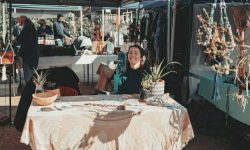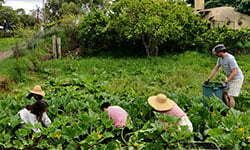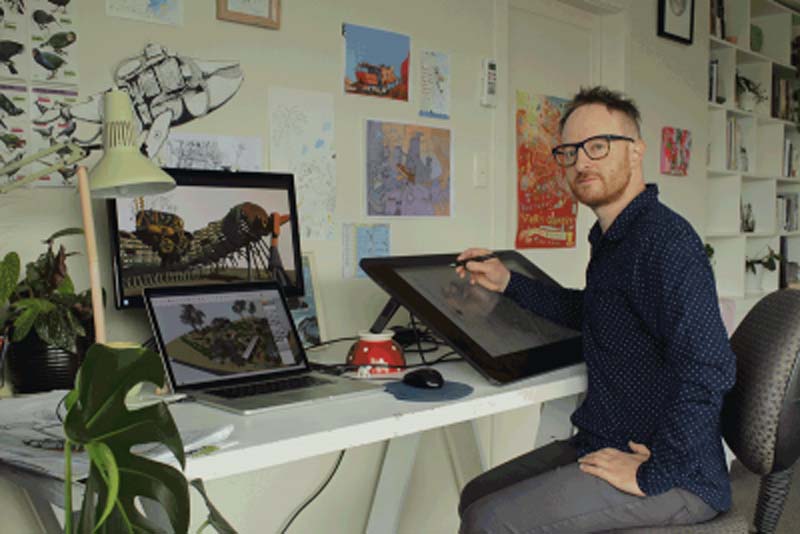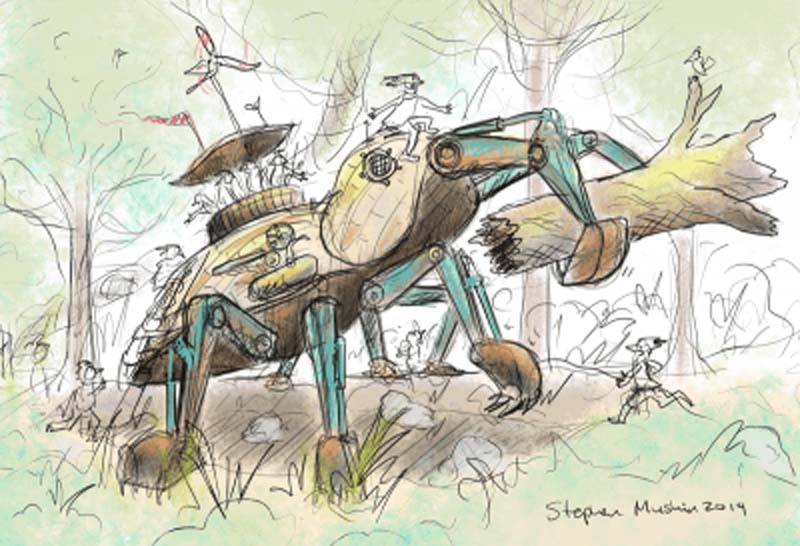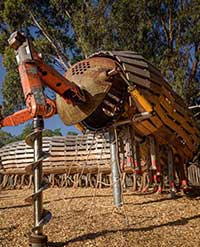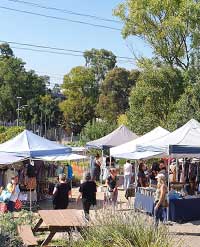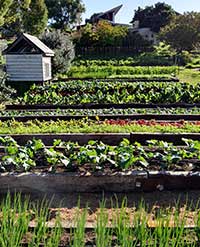How long did the design take from concept to finished structures?
I‘ve spent about a year designing Terra Wonder with CERES. And it’s been an awesome collaborative process.
The process involved a few months of mapping out key play areas, sketching designs, making 3D basic computer models and workshopping mechanisms and materials. In this time Nick collected a lot of bulldozer gears, excavator buckets, gearboxes and other bits of recycled industrial junk. Nick’s found-objects inspired my design drawings, and my design drawings sent Nick on wild goose chases to find the perfect recycled bits. At one point I was on the phone to Nick – from New Zealand – using Google Maps to search rail yards in Melbourne for spherical steel pressure vessels. They are very difficult to find.
We workshopped our landscape with an amazing group of play experts. We collected ideas from kids. And after about six months we began working with lead builder Adam Cogger and a bunch of talented local craftspeople to build the designs – innovating all along as new found objects and materials were incorporated into the final outcome.
IS THIS THE BIGGEST RECYCLED MILLIPEDE IN AUSTRALIA?
It is almost certainly the largest millipede in the world. But it is DEFINITELY the largest biogas-powered-mechanical-millipede with robot arms and a working rubber bottom. It is also the only millipede in the world that eats people (millipedes are typically vegetarian).
SOME PARTS OF THE PLAYSPACE HAVE BEEN FUNDED BY A PICK MY PROJECT GRANT – ARE THERE ANY COMPONENTS THAT STILL NEED FUNDING?
Definitely. Terra Wonder has been catapulted with Pick My Project. But about half of what we’ve dreamed-up is still yet to be funded.
CERES is still looking for funding to build the truck gearbox crane, the underground burrows, cement-truck-barrel-tree-cocoons, a spitfire-caterpillar art studio made from a recycled train carriage, and a ginormous excavator arm entrance to scare away helicopter parents. The gateway design depicts a battle scene (or a dance, depending on how you look at it) between machines and nature – the terrifying steel arm pitched against my favourite digging insect – the humble Mole Cricket.
Happily, at scale 500:1, nature and the Mole Cricket will DEFINITELY win against the excavator.
Hopefully at scale 1:1 too.


